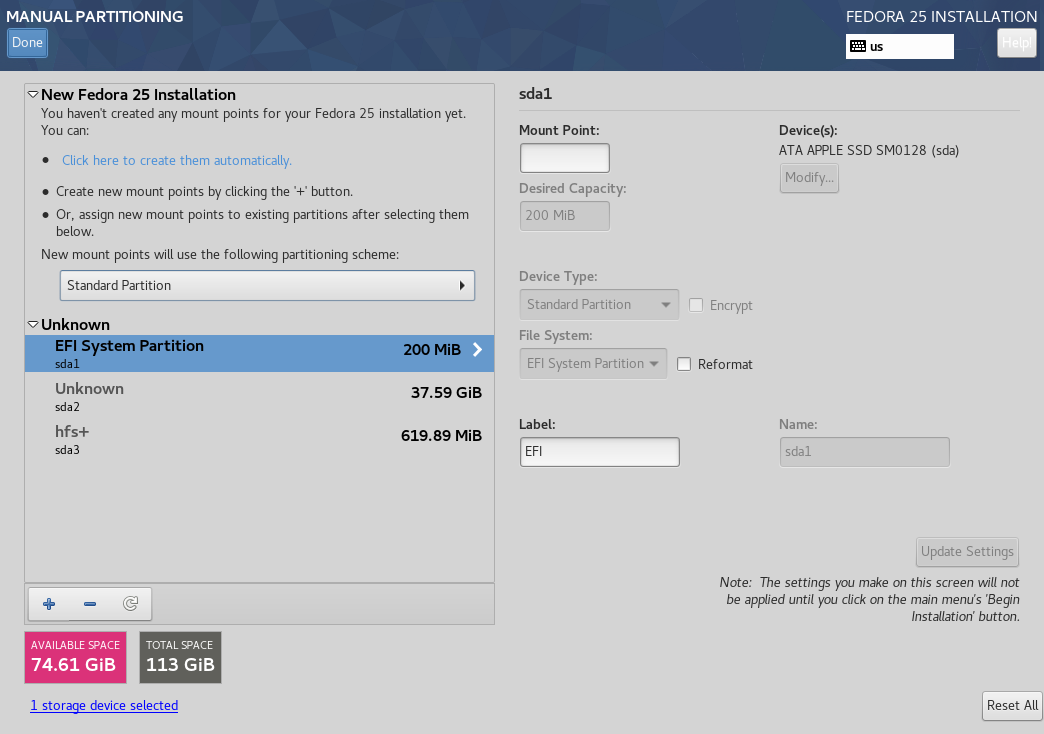Fdisk is a powerful and popular command line tool used for creating and manipulating disk. Third partition: An “A/UX Root slice 0” partition, which will be the main (root) storage space for the Linux OS and its related programs. You should fill up the remaining hard drive space with.
Partition manager software - EaseUS Partition Master can support ext2 and ext3 file systems under Windows Operating System. It can create, format, delete, wipe ext2/ext3 partition and recover lost ext2/ext3 partition.
Part 1: How to create a Linux ext2/ext3 partition
Step 1: Launch EaseUS Partition Master
Partition On Linux Machine
On the main window, right-click on the unallocated space on your hard drive or external storage device and select 'Create'.
Step 2: Adjust the new partition size, file system, label, etc.
Set the size, partition label, drive letter, file system, etc. for the new partition and click 'OK' to continue.

Step 3: Confirm to create a new partition
Click on the 'Execute Operation' button and confirm to create a new partition by clicking 'Apply'.
Part 2: How to format an EXT2/EXT3 partition
Step 1: Run EaseUS Partition Master, right-click the hard drive partition you intend to format and choose 'Format'.
Step 2: In the new window, set the Partition label, File system (NTFS/FAT32/EXT2/EXT3), and Cluster size for the partition to be formatted, then click 'OK'.
Step 3: Then you will see a warning window, click 'OK' in it to continue.
Step 4: Click the 'Execute Operation' button in the top-left corner to review the changes, then click 'Apply' to start formatting the partition on your hard drive.
Part 3: How to delete an EXT2/EXT3 partition
- Notice:
- If you saved important data in the partition which you want to delete, move and save those data to another secure location in advance.
Step 1: Install and launch EaseUS Partition Master on PC

On the main window, right-click on the hard drive partition which you want to delete and select 'Delete'.
Step 2: Confirm the deletion
Click 'OK' to confirm that you want to delete the selected partition.

Step 3: Execute to delete the partition
Click the 'Execute Operation' button at the top corner and keep all changes by clicking 'Apply'.
Part 4: How to recover a deleted or lost EXT2/EXT3 partition
Step 1: Launch EaseUS Partition Master on PC
Click on 'Partition Recovery' at the top of the main window.

Step 2: Select a hard disk to search for the lost partition(s)
Choose the hard drive disk or SSD where you lost partitions, and click 'Scan'.
Step 3: Wait for the scanning process to complete.
This program will scan the whole disk with two modes - 'Quick Scan' and 'Deep Scan' to find all lost partitions and data for you.
- Quick Scan will find your latest deleted partition with a fast speed.
- Deep scan will scan and find more and earlier deleted partitions.
Step 4: Select and recover lost partitions
Best Partition For Linux
1. Select the lost partition, marked as 'Deleted' with previous Labels, capacity etc, and click 'Proceed' to continue.
2. Click 'Recover Now' to confirm and restore the lost partition.
3. Click the 'Execute Operation' button and click 'Apply' to restore lost partition.
Part 5: How to wipe an EXT2/EXT3 partition
Step 1: Launch EaseUS Partition Master, right-click the partition you want to erase data from, and choose 'Wipe Data'.

Partition For Linux On Mac Windows 10
Step 2: In the new window, set the time for which you want to wipe your partition, then click 'OK'.
Linux List Partitions
Step 3: Click the 'Execute Operation' button in the top-right corner, check the changes, then click 'Apply' to wipe the data on your partition.
Linux Partitions Setup
Besides ext2/ext3 partition management, EaseUS Partition Master can aslo manage FAT and NTFS partitions.
